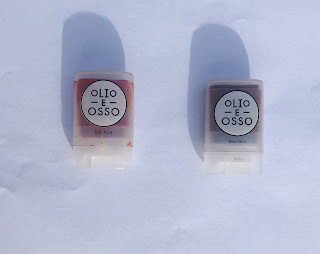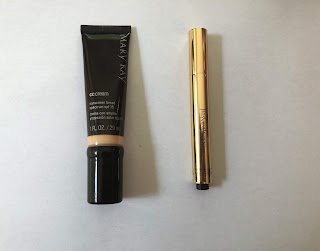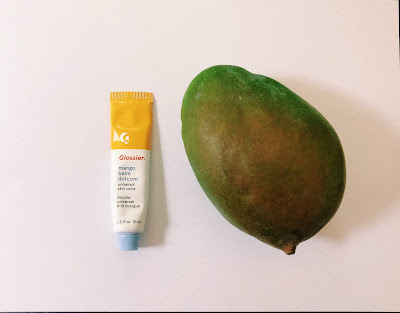Chemical Exfoliants
Chemical Exfoliants
I’m a huge chemical exfoliant fan, and I am willing to convert anyone who thinks otherwise. Keep reading if youre using a physcial exfolaint, GOD forbid St. *ve’s scrubs… I beg of you, your mother begs of you, and your skin is begging you.
So, questions arise: What are chemical exfoliants, how are they different than a physical exfoliants, and why is chemical superior? How do I know which one’s are good for me, my skin, and my routine?
Let’s get into the science (says me, not a scientist). According to Dermascope, “Chemical or mechanical exfoliation increases keratinocyte proliferation by weakening the intercellular glue that binds the dead cells together, allowing these cells to shed off, which clears the top layers of the stratum corneum of dead skin cells, debris, and impactions.” So think of all that dry skin as crusty, dried up glue— think of elementery school when you’d put glue on your palms. When you mechanically exfolate (think of a scrub) your physically sloghing off the glue— taking it off. This is better for the body. When you chemically exfoliate, you’re MELTING the glue and having it somewhat dissolve; this leads to a more effective removal of dead skin without as much force.
Scrubs are hard— both to make and use on the face. I’m going back in with the St. Ive’s example, because it’s one of those things that’s a perfect example of why something is terrible. Scrubs, especially walnut scrubs, are basically impossible to make each grain/granual a uniform shape; so you have a million jagged pieces of all different shapes. This can lead to scratches/scrapes/cuts, more acne/breakouts, and even broken blood vessals and venous veins from longterm use. While there ARE good scrubs out there, I see chemical exfoliants as a safer bet.
Acids are one of the biggest characters in a chemical exfoliant. This is how someone can figure out which product is right for them. (I’m only going to get into a few here).
According to Into The Gloss:
AHA’s: Water soluable, good for dry to normal skin. This really works on tthe skin’s surface.
Glycolic Acid: The “monarch of alpha hydroxy acids”.
Lactic Acid: Glycolic Acid’s best friend— sometimes derived from milk. So Cleopatra was actually ahead of the game with taking milk baths in 50 B.C. Her mind...
Mandelic Acid: A gentler AHA, this is best for those with sensitive skin. Also good for those with darker skin tones, becuase it exfoliates without brightening.
BHA’s: Oil Soluble— therefore, can penetrate past the skin’s surface. Best for oily skin.
Salicylic Acid: The Ultimate BHA. A heavy duty exfoliant— she isn’t playing any games, y’all. It goes to the root of the pore due to the fact that it can get through all the oil.
PHA’s: A less common acid than AHA/BHA’s— gentler but doesn’t penetrate as deeply.
Gluconolactone: Less common than BHA/AHA’s, this is a weaker (but still effective) acid. While it doesn’t penetrate the skin like an BHA, you don’t get the reddness and dryness, which makes it a favorite among many.
Retinoic Acid: Even if you don’t know that much about skincare, you’ve heard of Retinol (it’s just Vitamin A). According to Into the Gloss, “when vitamin A and it's deritatives are applied to your skin, it has to be converted to retinoic acid in order to actually work.” It’s one of the best, if not the best, ingredient for anti-aging. It can cause peeling and redness, due to it’s power as a product— don’t use it if you’re pregnant or breastfeeding! And to my teenage readers (whom I assume are my main demographic) people always say that one can be “too young” for certain ingrediants like retinol— don’t listen to them. If it helps/works for your skin, use it!
Here are some of my favorite chemical exfoliants:
Glossier Solution: I wrote about this as well in my Glossier Skincare Review— read that here. Includes BHA’s, PHA’s, and AHA’s— Salicylic Acid (BHA), Glycolic and Lactic Acid (AHA) and Gluconolactone (PHA). It also includes a “Anti-Stress Complex” with aloe and glycerin. I use this almost every night— it keeps my skin smooth and gives my pores a smaller apperance. Find it here.
Boscia Exfoliating Peel Gel: (NOTE: the packaging on Sephora’s website, because I’ve had this bottle for a minute lol) Uses AHA’s from fruit enzymes/antioxidants. Technically a “physical exfolaint” with chemical properties. This is a really interesting product— the best of both worlds. I would reccomend this as a transition prodcut for people who like physical exfoliators but want to try a chemical product— and those that want a “satisfying” experience— the dead skin and product mix together and ball up on the face. Find it here.
The Ordinary AHA 30% + BHA 2% Peeling Solution: I wrote on this in my Drugstore Skincare Haul Review— read it here. I really like this prodcut— granted, I don’t use it as often becuase I use Glossier Solution almost daily, and using this on top of that would be over-exfoliating. But when I run out of solution, I turn back to this. It’s a great product at an even better price.
Pixi Glow Tonic: I wrote a review on this— read it here. I liked this product, but I’ve found other treatments that I like better.
Son and Park Beauty Water: According to SokoGlam, it “mildly exfoliates with willow bark and papaya extract to help sweep away dead skin cells, revealing brighter skin tone and smoother texture.” I couldn’t find any more info, but I assume due to the fruit elements citric acid is involved, a weaker but definetly effective exfoliant. I use this morning and night— I LOVE this toner. It makes my pores look smaller, plumps the skin, cleans without being an astringent, and preps my skin for the rest of my routiene. Find it here.
Sources:




Comments
Post a Comment